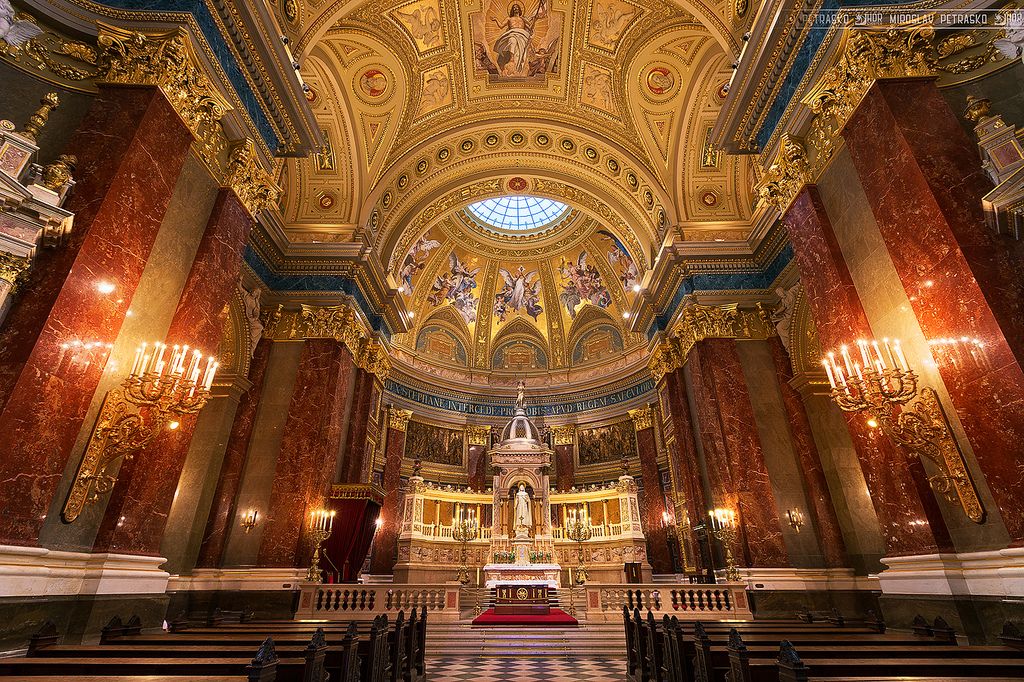In his masterpiece Brideshead Revisited, Evelyn Waugh implicitly lays out a program of evangelization that has particular relevance to our time. “Brideshead” refers, of course, to a great manor house owned by a fabulously wealthy Catholic family in the England of the 1920’s. In the complex semiotic schema of Waugh’s novel, the mansion functions as a symbol of the Catholic Church, which St. Paul had referred to as the “bride of Christ.” To Brideshead comes, at the invitation of his friend Sebastian, Charles Ryder, an Oxford student, devotee of the fine arts and casual agnostic. Charles is overwhelmed by the sheer majesty of Brideshead’s architecture and the sumptuousness of its artistic program, which includes magnificent painting and sculpture, as well as a fountain of Bernini-like delicacy, and a chapel which was a riot of baroque decoration. Living within the walls of the manse, Charles mused, was to receive an entire artistic education. The beauty of the place would entrance Charles for the rest of his life, drawing him back again and again.
In the course of his many visits, Charles came, of course, to know the inhabitants of the house, Sebastian’s strange and beguiling family. Especially through Sebastian’s mother, the aristocratic and devoutly Catholic Lady Marchmain, he became familiar with the moral demands of the Catholic Church, especially as they pertained to Sebastian’s increasing problem with alcohol. For many years, Charles joined Sebastian in his friend’s rebellion against these strictures, but in time, he came to appreciate their importance, indeed their indispensability. Finally, at the very close of the story, we learn that Charles, the erstwhile agnostic had come to embrace the coherent philosophical system of Catholicism and to worship the Eucharistic Lord who was enshrined in the beautiful chapel at Brideshead. Many years after entering that chapel as a mere aesthete, he knelt down in it as a believer.
This brief and utterly inadequate summary of Waugh’s narrative is meant simply to highlight a ryhthm that obtains, I would argue, in effective evangelization. The best evangelical strategy is one that moves from the beautiful to the good and finally to the true. Especially within our cultural matrix, so dominated by relativism and the valorization of the right to create one’s own system of meaning, commencing with either moral demand or the claim to truth will likely raise insuperable blocks in the person one wishes to evangelize. (Who are you to tell me how to behave or what to believe? How can you be so arrogant as to think that you should impose your thought patterns on me?) This is precisely why moralizing and intellectualizing are often non-starters in regard to persuasion. But there is something unthreatening about the beautiful. Just look at the Sistine Chapel Ceiling or the Parthenon or Chartres Cathedral or Picasso’s “Guernica”; just read The Divine Comedy or Hamlet or The Wasteland; just watch Mother Teresa’s sisters working in the slums of Calcutta or Rory McIlroy’s golf swing or the movements of a ballet dancer. All of these work a sort of alchemy in the soul, and they awaken a desire to participate, to imitate, and finally to share. Hans Urs von Balthasar, one of the great advocates of the aesthetic approach to religion, said that the beautiful claims the viewer, changes him, and then sends him on mission.
The pattern is more or less as follows: first the beautiful (how wonderful!), then the good (I want to participate!) and finally the true (now I understand!). A young man watches a skillfully played game of baseball, and it awakens in him a profound desire to play as well as those whom he admired; and then the actual playing of the game teaches him, from the inside, the rules and rhythms of baseball. A completely inadequate way of drawing a kid into the world of baseball would be to start with a clarification of the rules or with a set of drills. Rather, show him the beauty of baseball, and he will want to play, and having played, he will know.
The same applies, a fortiori, in regard to religion. I might suggest that the evangelist start with the Sainte Chapelle or the life of Francis of Assisi or the Little Flower’s Story of a Soul or Thomas Merton’s Seven Storey Mountain or Gregorian chant, or perhaps best of all, a carefully executed liturgy of the Roman rite. These would function in the manner of Brideshead, captivating even the most bored agnostic. Then, the wager goes, the captivation would lead to a desire, perhaps vague at first, to participate in the moral universe that made those artistic expressions possible. And finally, the participation would conduce toward a true and experiential understanding of the thought patterns that undergird that way of life. First the beautiful, then the good, then the true.
I wonder whether this winsome aesthetic approach might prove more frutiful in a postmodern culture so instinctively skeptical of dogma either intellectual or moral.
Originally posted on Word on Fire


